
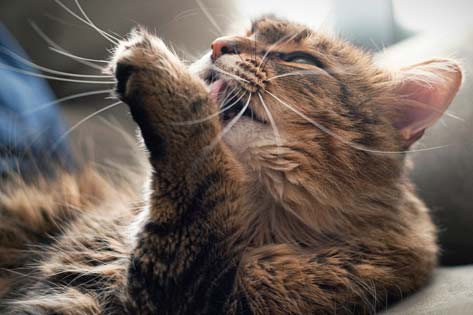
By Lorie Huston, DVM
If you have a cat, you’ve probably dealt with hairballs at one time or another. Most frequently, a cat owner becomes aware of an issue when the cat vomits a long tubular mass of hair — a hairball.
Hairballs occur as a result of your cat grooming and swallowing hair. All cats groom themselves. Swallowing hair when they do so is a normal occurrence. Normally, the cat’s digestive system is able to handle the hair and it simply passes through the intestinal tract and out in the feces. However, in some instances, rather than passing through the intestinal tract, the hair is vomited instead — this may seem like the cat is coughing up a hairball.
Grooming your cat is one of the best things you can do to prevent your cat from getting hairballs. Regular brushing and/or combing removes much of your cat’s loose hair before it can be ingested thus limiting the amount of hair that your cat swallows. In turn, less hair ingested means fewer hairballs being produced.
And while shorthaired cats can and do get hairballs, cats with long hair are especially prone to them. This makes grooming your longhaired cat regularly even more important. Some cats may require daily brushing/combing. In addition, regular grooming will keep your cat’s hair coat free of tangles and mats while also keeping his skin healthy.
There are a number of hairball remedies marketed to help control hairballs. Most of these are petroleum based and work by trying to lubricate the hairball, making it more likely to be passed normally through the intestinal tract. These may be effective for some cats but are not effective in all cases. Some veterinarians, however, believe that these remedies can actually be harmful and have no place in the treatment or prevention of hairballs. Discuss your cat’s situation with your own veterinarian before you begin administering any of these products.
There are also a number of commercial cat foods that are marketed to help prevent and/or control hairballs. Most of these diets feature a high volume of fiber and work on the assumption that the fiber helps keeps the gastrointestinal tract moving normally. These may work for some cats but, again, are not effective in all cases.
More recently, many veterinarians (and cat owners) have come to believe that a grain-free diet may be more appropriate for cats that vomit frequently. The theory behind this feeding strategy is that cats did not evolve to eat grains. Cats are obligate carnivores and their “natural” diet consists of a high protein level and low carbohydrate level. Grain-based foods tend to be higher in carbohydrates, leading to changes in the flora (i.e. bacteria) of the cat’s intestinal tract. These changes may change the motility in the intestinal tract and contribute to the inability to be able to pass hair normally through the intestinal tract.
While many cats vomit an occasional hairball, it should not be a common event. If your cat is vomiting frequently with or without hair in the vomitus, there may be other health problems. Inflammatory bowel disease has been associated with frequent vomiting, as has intestinal lymphoma (a type of cancer.)
Hairballs can cause problems other than vomiting as well. For instance, a hairball can become lodged in the intestinal tract causing an obstruction — a cat hairball blockage.
If your cat is vomiting frequently, you should seek advice from your veterinarian. Frequent vomiting, with or without hairballs, is not a normal circumstance for any cat. Your cat may need a change in diet or additional treatment. Your veterinarian can help you determine the cause of the vomiting and find an appropriate solution.
Image: Joyce Michaud / via Shutterstock
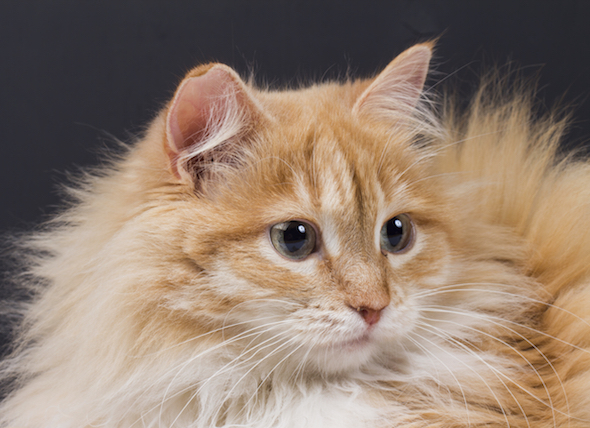 Facts About Cat Dander and Allergies
By Vanessa Voltolina
Do you get
Facts About Cat Dander and Allergies
By Vanessa Voltolina
Do you get
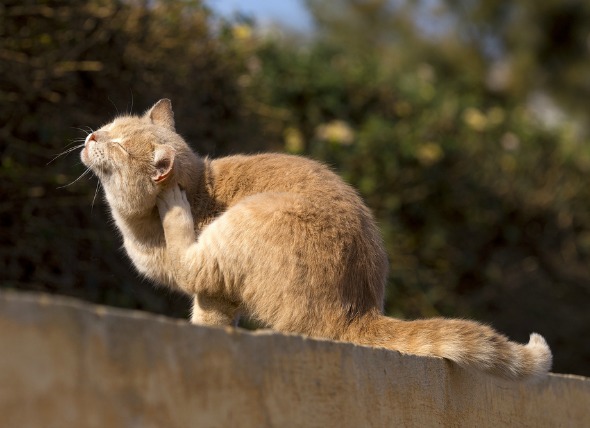 Does My Cat Have Fleas?
How to Inspect and Remove Fleas from Your Cat
&nbs
Does My Cat Have Fleas?
How to Inspect and Remove Fleas from Your Cat
&nbs
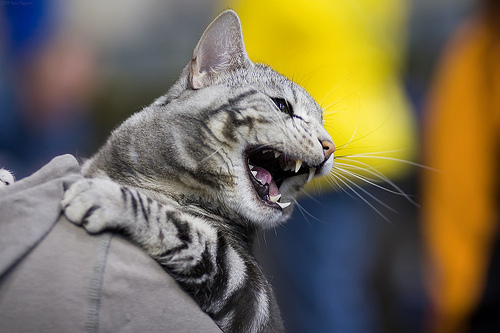 Cat Scratch Fever
When people talk about cat scratch feve
Cat Scratch Fever
When people talk about cat scratch feve
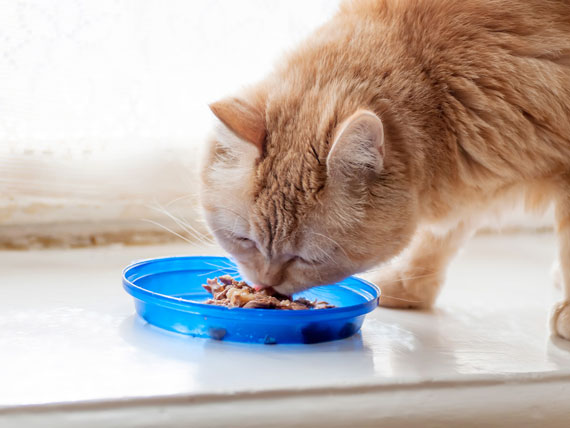 Chronic Kidney Disease in Cats: Monitoring Nutrition is Essential
By Jennifer Coates, DVM
Cats are livin
Chronic Kidney Disease in Cats: Monitoring Nutrition is Essential
By Jennifer Coates, DVM
Cats are livin
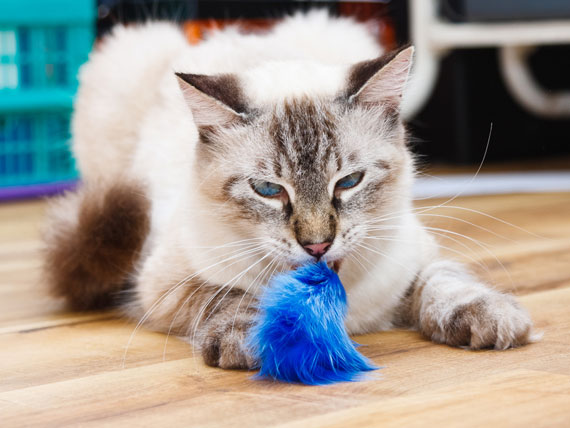 Does Your Aging Pet Need a New Diet and Lifestyle?
HOW DIET AND EXERCISE CAN MAKE YOUR SENIOR PE
Does Your Aging Pet Need a New Diet and Lifestyle?
HOW DIET AND EXERCISE CAN MAKE YOUR SENIOR PE
Copyright © 2005-2016 Pet Information All Rights Reserved
Contact us: www162date@outlook.com